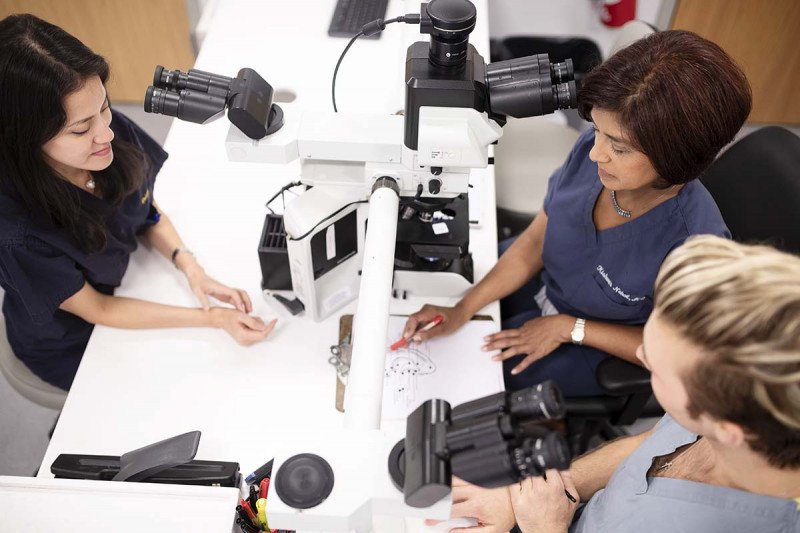
MSK’s skin cancer experts work together as a team to diagnose squamous cell carcinomas and other skin cancers. Shown here (from left): Dermatologists Erica Lee, Kishwer Nehal, and Anthony Rossi.
To diagnose skin cancer, the doctor will start by taking a complete medical history and asking you about your exposure to the sun over the years. We’ll also want to know about the risk factors you may have, such as previous skin cancers or a family history of skin conditions.
Show your doctor any unusual marks on your skin that are worrying you. Your doctor will probably ask you when the abnormal patch of skin developed and whether it has changed in size or appearance.
Biopsy for Diagnosis
To confirm squamous cell skin cancer, we need to take a biopsy. This procedure involves numbing the area affected with a local anesthetic and taking off a very small skin sample of the affected tissue.
Memorial Sloan Kettering has world-class pathologists who are experienced in looking at all types of skin cancer under the microscope. Learn more about the vital role pathologists play.
Risk Levels for Squamous Cell Carcinoma
Part of diagnosing squamous cell carcinoma involves classifying the condition as either low or high risk. This decision is based largely on the risk of:
- the cancer coming back after treatment (recurrence)
- the condition spreading, which depends primarily on where on the body the cancer is located
What Is Low-Risk Squamous Cell Carcinoma?
A squamous cell carcinoma is usually put in this category if it’s small or superficial, has a well-defined edge, hasn’t been treated before, and is at low risk of coming back after treatment.
What Is High-Risk Squamous Cell Carcinoma?
Cancer on the central part of the face — the eyelids, nose, lips, and ears — is considered high risk and has the potential to spread (metastasize) to other parts of the body. High-risk squamous cell carcinoma is also one that:
- has come back after treatment (is recurrent)
- is larger than two centimeters in diameter (about the size of a nickel) on the trunk of the body or on your hands, feet, or other body extremities
- appears in a person whose immune system is not working normally (is immunocompromised)
The skin cancer experts at MSK can help you find a treatment approach for squamous cell skin cancer no matter what your condition’s risk level may be.
We’re available 24 hours a day, 7 days a week


